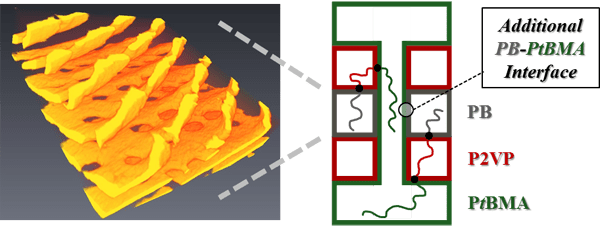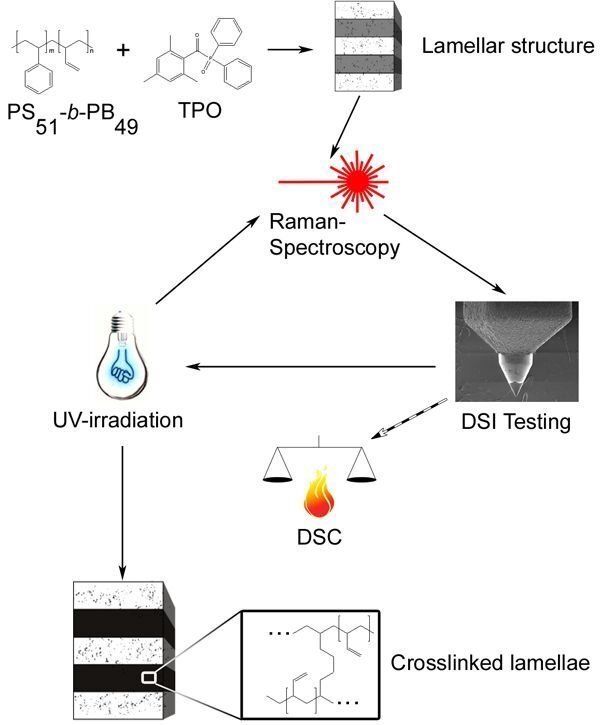Block Copolymers
Todays polymer chemistry offers a variety of polymerization techniques, each of them having different requirements and bearing advantages and disadvantages. Examples range from conventional free radical polymerization via controlled radical polymerization techniques (Atom Transfer Radical Polymerization - ATRP; Nitroxide Mediated Polymerization - NMP; Reversible Addition Fragmentation Chain Transfer Polymerization - RAFT), ring opening polymerizations (Metal-Catalyzed; Cationic Ring-Opening Polymerization - CROP) to synthetically demanding ionic polymerization methods (Cationic / Anionic Polymerization; Group Transfer Polymerization - GTP).
Each of these methods has different prerequisites in terms of reactant purification or its tolerance towards functional groups. Our aim is to carefullly select and / or combine different techniques for the synthesis of innovative and highly functionalized block co- and terpolymers. Especially if polymerization methods are combined (e.g. via termination of polymerization A with a moiety suitable of initiating polymerization B), the characterization, the initiating efficiency, and the differentiation of the "intermediate" macroinitiator from the final block copolymer are crucial.
Once synthesized and sufficiently characterized, block co- and terpolymers show a rich and fascinating phase behavior in the bulk, in thin-films on different substrates, and in solution (see section on complex colloids). This is the result from microphase separation occurring due to the block structure, i.e. the covalent linkage of different, immiscible polymer segments at the junction. We are further interested in the preparation and, eventually, stabilization of unusual bulk morphologies. One example are discontinuous structures where an additional interface is generated between the A and C blocks in ABC triblock terpolymer bulk phases.
Recent work focused on a quite unique bulk morphology - tetragonally perforated lamellae from polybutadiene-block-poly(2-vinylpyridine)-block-poly(tert-butyl methacrylate) BVT triblock terpolymers. Such structures might (after crosslinking and sonication-assisted dissolution) be of interest as highly selective membrane sheets with extremely well-define pore sizes.
see also "Tetragonally perforated Lamellae from BVT Triblock Terpolymers in the Bulk - Preparation, Crosslinking, and Dissolution" - Macromolecules 45, 2012, 7956-7963
Image: Felix H. SchacherIn another project, we investigated crosslinking processes within lamellar domains of polystyrene-block-polybutadiene diblock copolymers with a combination of different methods: X-ray scattering, scanning force microscopy, RAMAN spectroscopy, differential scanning calorimetry (DSC), and depth-sensing indentation (DSI).
see also "UV-induced Crosslinking of the Polybutadiene Domains in Polystyrene-block-polybutadiene Block Copolymer Films - An In-Depth Study" - Polymer 53, 2012, 5641-5648
Image: Felix H. Schacher
